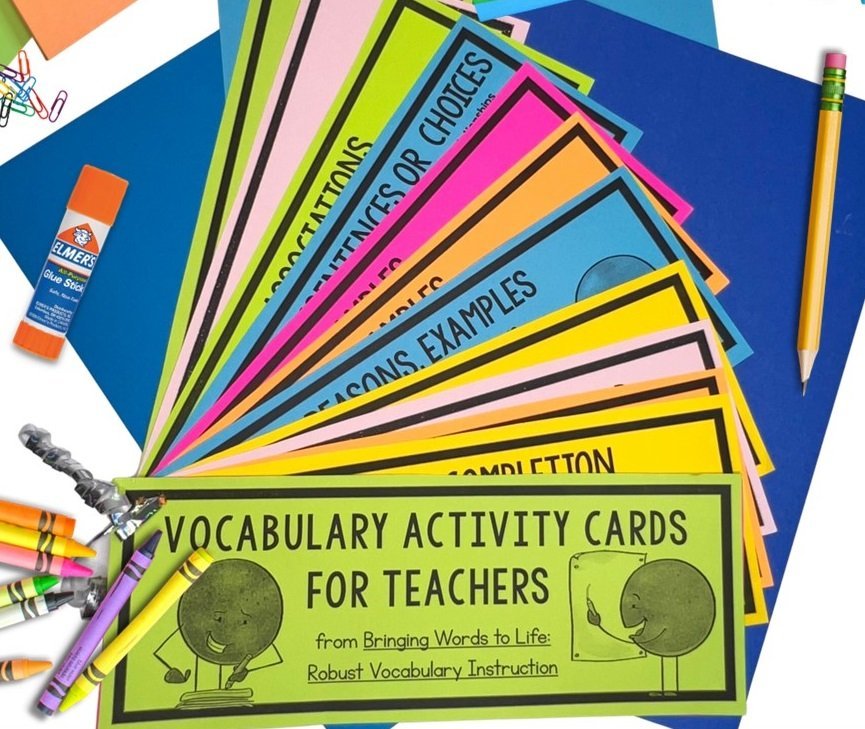
The summer is the best time to catch up on your reading time, and it’s also a great time to grow professionally too. In this post, I’d like to share a book I thoroughly enjoyed, Reading in the Wild by Donalyn Miller.

At the VSRA conference, I got the privilege of meeting Donalyn Miller, and I bought my copy of Reading in the Wild that day. It is easy to read and filled with practical advice on helping motivate readers of all types. In this post, I will highlight what I’ve taken from the book, but by all means, read it for yourself. If you haven’t read it, pick up The Book Whisperer first.
So just what does a wild reader look like in the classroom?

Donalyn introduces the book with discussion about how important it is to give students to time read during the school day. Many teachers assign 20-30 minutes a day of nightly reading as part of homework, but she contends that we need to find time in the school day to hook the kids and help them recognize times when they can get their books out. She uses a workshop approach to teaching reading and writing. She offers mini lessons using mentor texts, anchor charts, graphic organizers, and materials common with most classroom reading instruction, and during the application of comprehension strategies, she pulls in independent reading and discussion. It is through reader notebooks that her students reflect on their reading and practice using the skills taught. She advises making use of time “on the fringes” When might that be? Here’s a short list of times I came up with, and I’m sure you can add to the list.
- When kids are waiting for Library checkout, PE, or Music.
- During transition minutes between classes if you’re departmentalized.
- After work is completed.
- While waiting for the bus at the end of the day
- Before, during, and after lunch and recess.
- As students are arriving to school (This is a great way to de-stress and prepare for the day.)
- During guided reading rotations
Important point…You must always be prepared for a reading emergency, and we need to help our students recognize the importance of carrying a book everywhere in order for them to open it and read. To create wild readers, we each need to look at our day and find places where we can give 5-10 minutes blocks of time toward independent reading.

Knowing your students’ Lexile or guided reading levels has been ingrained in our heads over the past few years, and Donalyn advises that we not adhere exclusively to this. Rather, we should consider interest and motivation when recommending books to students. We need to be familiar with what our students are reading and know books well enough to offer options based on our students’ interests. We need to remind our students that it’s okay to abandon books when they aren’t a good match and let book selection develop naturally. When students make bad choices, they find the book doesn’t hold their interest and eventually they’ll abandon the book on their own, but if they are persistent in reading it because they are motivated, we certainly want to encourage them to push on.
Donalyn urges teachers to read to their students high interest books that may lead to other reading options either by genre, theme, or by the same author. Important point-To become familiar with what your students may enjoy, use websites such as Goodreads.com, make lists of books recommended by your students, and consult your colleagues and librarian for ideas.

One characteristic of young adult readers is that they enjoy talking about their reading, and through these conversations, comprehension improves. In Donalyn’s classroom, students keep a star chart and refer to it when they’re giving book commercials or sharing with friends. She also has her students read from all genre types in the 40 book challenge. This form from Becca at Simply 2nd Resources;would work well for students to track their reading genres.
Another routine Donalyn has implements in her classroom is conferring with students. She uses this time to take a running record, discuss the book with the students, assist them in planning for future reading, check reader notebooks, and to assess application of comprehension strategies.
At the reading conference, Donalyn shared that she found herself feeling frustrated that she wasn’t conferring weekly with her students. She advised starting with the top of your class list and working your way down before starting over. She has been able to meet with each student three times per grading period this way.
She uses Evernote to keep her conference records which allow audio of the child reading, but I haven’t had a chance to check that out yet. She mentioned the usefulness of being able to readily access the information for child study meetings or parent teacher conferences. This form (questions created by Regie Routman) can also be used to guide your conferring sessions as well.
Finally, students need to time to talk about their reading with each other. This builds excitement and can also be used by the teacher for grading purposes. Donalyn has time set aside each Friday for reading commercials. Students are asked to prepare reading commercials at the end of their reading and present them to the class. These are brief talks. She discourages the use of lengthy book reports that bog students down and may keep them from reading. One idea that Donalyn shared at the conference was to dedicate a bulletin board space to book recommendations. Donalyn used index cards…no frills, but when the same book pops up on the board multiple times, students infer that it’s a must read.

As previously mentioned, helping students plan for future reading is an important step in the conferring process. Students should keep a list of what they’ve read to feel a sense of accomplishment, but they also need a list of what they plan to read in the future. This expedites the book selection process at library checkout and helps avoid wandering from shelf to shelf the whole period too. Students have their lists together and can quickly pull together what they’re wanting to read and get on with reading. These plans develop from conversations between students and from the teacher, and like the students, we need to have our list together too. Donalyn keeps a list of books her students recommend to her, and she reads them. In our busy lives, we may not read cover to cover, but it is meaningful to students to see that we listen to them and can talk to them about the books later.

What about the dormant reader? You know…the child who abandons book after book and often fake reads? One way to entice him/her is through the sharing of a new book picked especially for him/her that matches his/her interests. Giving students a survey at the start of the year may help you in knowing your students’ interests and reading tastes. Donalyn mentioned that she often uses part of the conferring time to visit her classroom library with the child to find a stack to pick from. If you haven’t done an interest inventory, you could use {Donalyn’s}. There are many inventories available online, or I also like this one from Joanne Miller at Head Over Heels for Teaching.
Finally, since I mentioned the classroom library, I’ll take a minute to talk about them. Even if your school has a well stocked library, it is very important that students have access to an attractive and well organized classroom library. Even if your classroom is small, dedicating space for a cozy reading nook sends the message to your students that you see this as an important component in your instructional routine. Make the reading area inviting and organize books in a way that students can see them easily. If maintaining the library is a challenge, put a responsible student in charge of taking in and putting away the books. You might put together baskets of your recommendations and put on display seasonal books, books that fit a theme your studying, or books from various genres.

As the year progresses, you will see that your students have reading preferences. Their star charts will contain more books from a certain genre for sure, and reader bonds will form between students who gravitate toward the same reading preferences. This is a sign that you’ve created wild readers. By showing students various genres, we are taking them to the reading buffet. They may do a taste test only for some genres, or they may discover they have a new favorite food to devour. The key is for us to show them the buffet and help them develop their tastes.

Finally, I’ll end with this question. Are you reading in the wild? We, as professionals, should keep up with our practice. We need to read professional books in order to keep ourselves abreast of current research. We also need to read for pleasure. We, like our students, need to read on the fringes and keep a book on hand for those reading emergencies. We need to talk about our reading with colleagues and friends. This summer, I am reading Teach Like a Pirate and Falling in Love with Close Reading. What professional books have inspired you?

















3 Responses
Falling in Love with Close Reading and Notice and Note are on my summer reading lists. Thanks for an excellent post!
-Lisa
Grade 4 Buzz
Thanks Lisa! I am glad you liked. I'll have to look for Notice and Note. I am thinking it'd match the way I teach. I have worked with my kids a lot on analyzing text.
Once again I enjoyed reading your post!
My Reading in the Wild book should be here Thursday, looking forward to reading it. Currently I try to read before going to sleep…before I know it zzzzz. Hopefully this summer I will be able to stay awake 🙂 Therefore I have many "fringe" reading times!
Sebrina
Burke's Special Kids